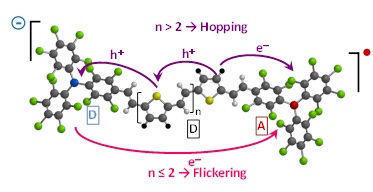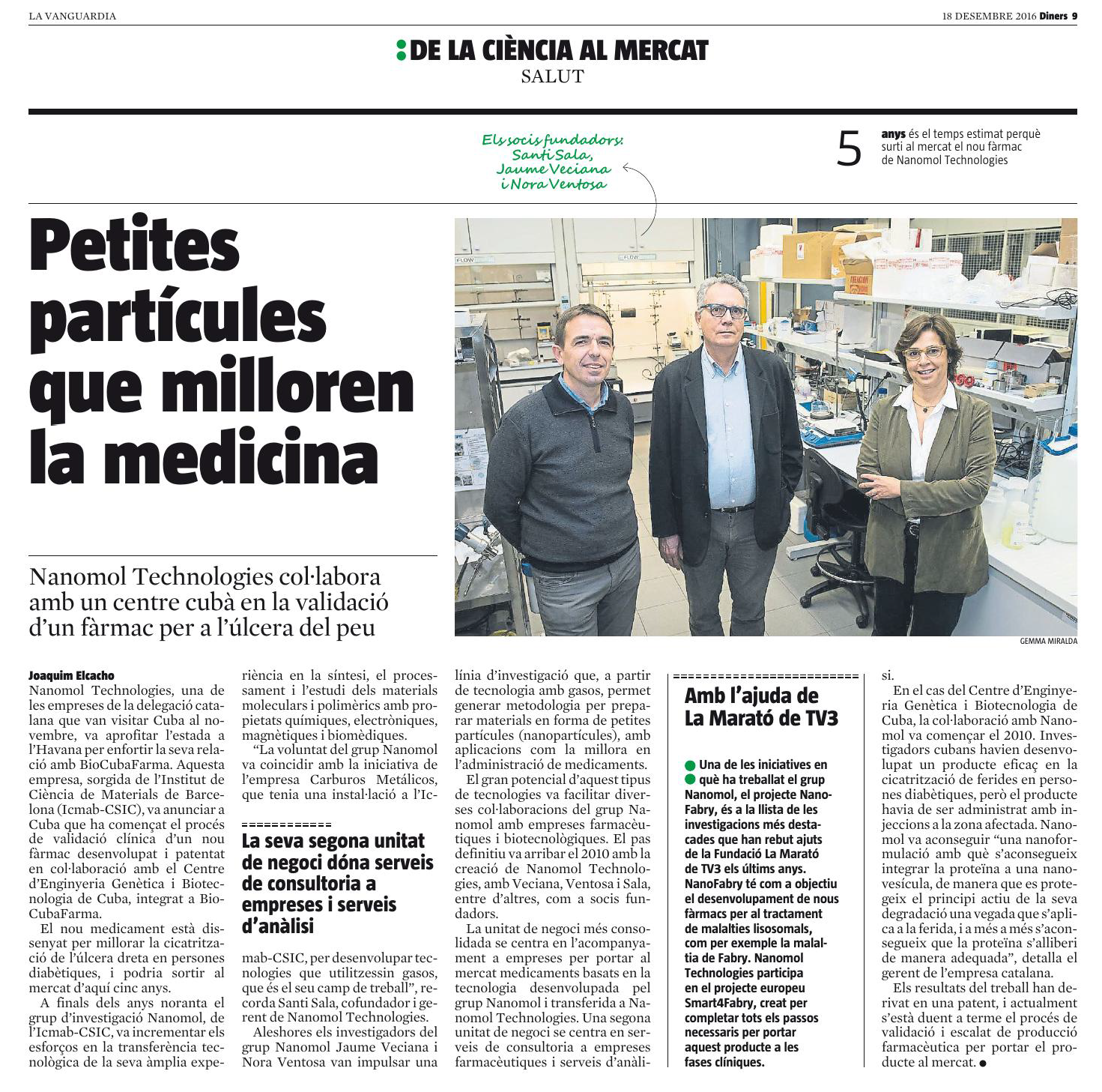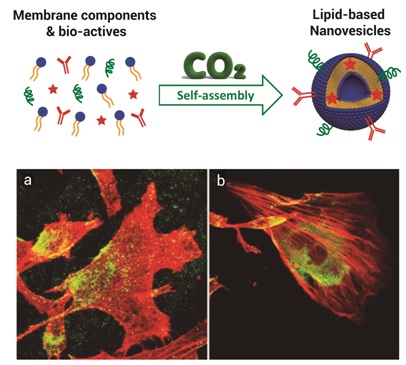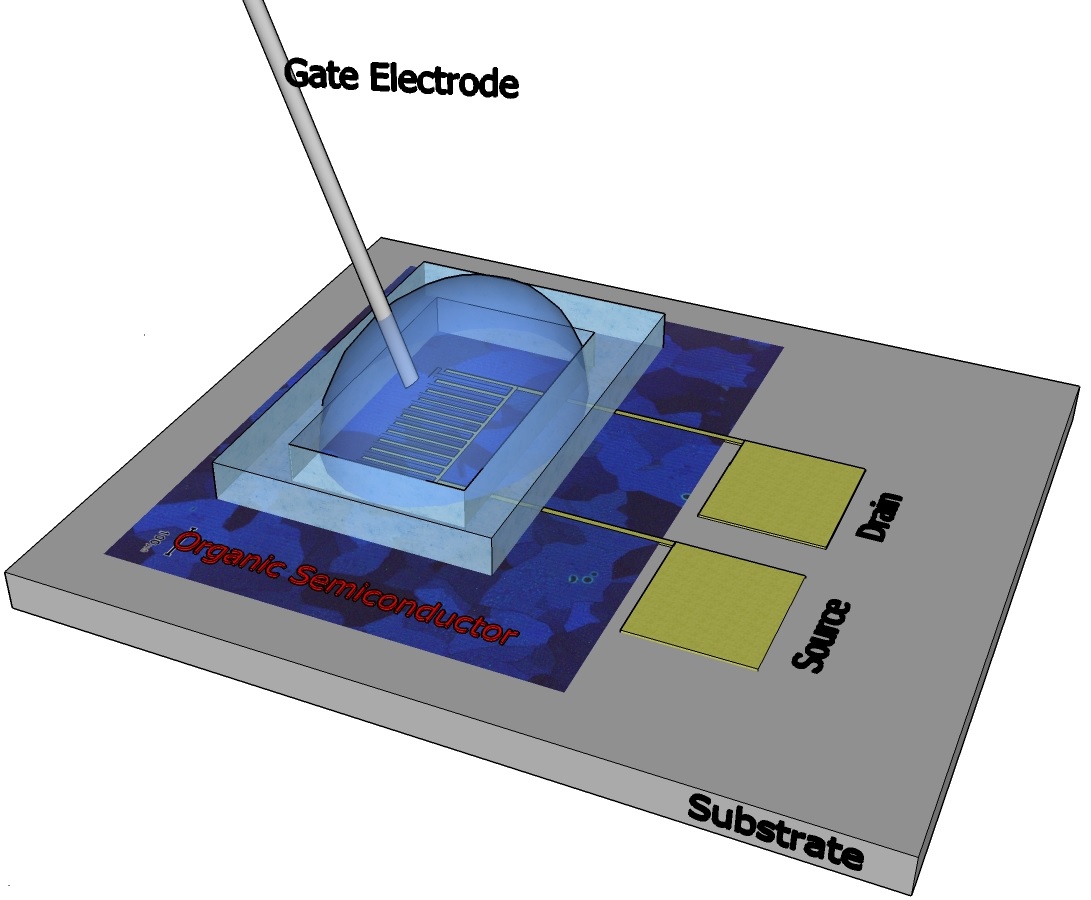
On the Operative Mechanism of Hole Assisted Negative Charge Motion in Ground States of Radical-anion Molecular Wires
C. Franco, P. Mayorga Burrezo, V. Lloveras, R. Caballero, I. Alcón, S. Bromley, M. Mas-Torrent, F. Langa, J.T. López Navarrete, C. Rovira, J. Casado, J. Veciana.
J. Am. Chem. Soc. 2017, 139, 686−692. DOI: 10.1021/jacs.6b12601
Abstract: Operating mechanisms for unimolecular electron transfer/transport in the ground state of radical-anion mixed-valence derivatives occurring between their terminal perchlorotriphenylmethyl/ide groups through thiophene-vinylene oligomers that act as conjugated wires of increasing length up to 53 Å have been determined. The unique finding is that the net transport of the electron in the larger molecular wires is initiated by an electron-hole dissociation intermediated by hole delocalization (conformationally assisted and thermally dependent) forming mobile polaronic states in the bridge that terminate by an electron-hole recombination at the other wire extreme. On the contrary for the shorter radical-anions our results suggest that a flickering resonance mechanism which is intermediate between hopping and superexchange is the operative one. We support these mechanistic interpretations by applying the pertinent biased kinetic models of the charge/spin exchange rates determined by electron paramagnetic resonance and by molecular structural level information obtained from UV-Vis and Raman spectroscopies and by quantum chemical modelling.
Read full article here: http://pubs.acs.org/doi/abs/10.1021/jacs.6b08649

TTF–PTM dyads: from switched molecular self assembly in solution to radical conductors in solid state
Manuel Souto, Concepció Rovira, Imma Ratera* and Jaume Veciana*
CrystEngComm, 2017 19, 197–206 Highlight
DOI: 10.1039/c6ce01660j
Organic donor–acceptor (D–A) systems formed by the electron-donor tetrathiafulvalene (TTF) linked to the electron-acceptor perchlorotriphenylmethyl (PTM) radical through different π-conjugated bridges exhibit interesting physical properties such as bistability in solution or conductivity in solid state. Understanding the interplay between intra- and intermolecular charge transfer processes in solution is of high interest in order to rationalize the self-assembling ability and conducting properties of such dyads in solid state. In this Highlight we examine the self-assembling properties of different TTF–π–PTM radical dyads that have potential applications as molecular switches or conductors in the field of molecular electronics.
http://pubs.rsc.org/en/content/articlelanding/2016/ce/c6ce01660j#!divAbstract

Nano Particles to Improve Medicine
La Vanguardia publishes on Sunday 18th of December edition that The Center of Genetic Engineering and Biotecnology (CIGB-Biocubafarma) and our spin-off Nanomol Technologies start to clinically validate a new drug that aims at improving the healing of diabetic foot ulcers and preventing amputation.

Lipid-based Nanovesicles for Nanomedicine
N. Grimaldi, F. da Silva, N.V. Segovia, L. Ferrer-Tasies, S. Sala, J. Veciana,* and N. Ventosa*, Chem. Soc. Rev., 2016, 45, 6520—6545
ABSTRACT: This review presents the large plethora of lipid-based nanovescicles available nowadays, focusing on a new generation of non-liposomal L-NVs and showing their similarities and differences with respect to their ancestors (liposomes). Since the overspread of a nanomaterial to the market is also strongly dependent on the availability of technological-scale preparation methods, it also extensively review the current approaches exploited for L-NV production. The most cutting-edge approaches for their preparation based on compressed fluid (CF) technologies are highlighted since they show the potential to represent a game-change in the production of L-NVs, favoring their step from the bench to the market. Finally, this review briefly discusses L-NV applications in nanomedicine looking also for their future perspectives.
http://pubs.rsc.org/en/content/articlelanding/2016/cs/c6cs00409a#!divAbstract

Electrolyte-Gated Organic Field-Effect Transistor Based on a Solution Sheared Organic Semiconductor Blend
Francesca Leonardi, Stefano Casalini, Qiaoming Zhang, Sergi Galindo, Diego Gutiérrez, Marta Mas-Torrent. Advanced Materials. DOI: 10.1002/adma.201602479
This communication presents a novel electrolyte gated field-effect transistor based on a blend of dibenzo-tetrathiafulvalene and polystyrene deposited through bar-assisted meniscus shearing. This technique allows the fabrication of high performing electronic devices suitable for (bio)sensing applications and might capture industrial interest due to its scalability. The reported devices can operate in aqueous solution with comparable complexity to real samples.
Read full article here: http://onlinelibrary.wiley.com/doi/10.1002/adma.201602479/full








 News
News